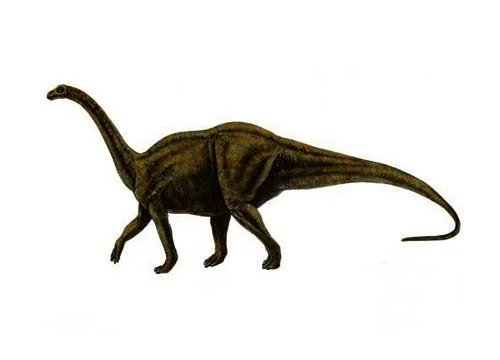Melanorosaurus (Black mountain lizard)

Meh-lan-os-sore-us
Sidney H. Haughton - 1924
Herbivore
Estimated 6 meters long
Sauropod
M. readi (type)
South Africa - Elliot Formation
Early Jurassic, 183-174 million years ago
Melanorosaurus Facts
Melanorosaurus is a genus of sauropodomorph dinosaur that lived during the Early Jurassic period, around 183 to 174 million years ago. It is known from fossils found in South Africa and Lesotho, and was first described in 1924 by the South African paleontologist Sidney Haughton.
Melanorosaurus was a large and robust quadrupedal herbivore, measuring up to 6 meters (20 feet) in length and weighing around 1 ton. It had a long neck and tail, a small head, and a robust body with powerful legs. Its name, which means “black mountain lizard,” refers to the dark sandstone formations where its fossils were first discovered.
Melanorosaurus is an important dinosaur for understanding the early evolution of sauropods, the long-necked, long-tailed herbivorous dinosaurs that became dominant during the Jurassic and Cretaceous periods. It has been suggested that Melanorosaurus was an early member of the group, and may have been a transitional form between the smaller, bipedal sauropodomorphs and the larger, quadrupedal sauropods.
Today, Melanorosaurus is known from several partial skeletons and isolated bones, including vertebrae, limb bones, and teeth. It is a fascinating dinosaur to study, as it offers insights into the early evolution of one of the most iconic groups of dinosaurs in history.



